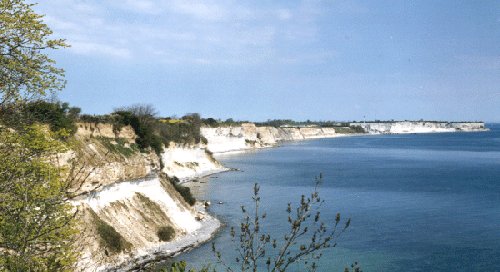At its annual meeting in Qatar, UNESCO’s world heritage committee has added the coastal cliff Stevns Klint in Denmark to its list of
outstanding world heritage sites.
The Danish Minister for Culture, Marianne Jelved, says:
”I am proud that the UNESCO world heritage committee have recognized the unique value of Stevns Klint. And particularly proud that Denmark has once
again made a contribution to our common world heritage and, in that way, helped forge bonds across national boundaries.”
The mayor of Stevns Municipality, Mogens Haugaard Nielsen, says:
”We are extremely happy. Our success is a result of the indefatigable work of many people and institutions for a common cause. In particular, the
commitment of local citizenry along the cliff has been crucial. Now we are looking forward to showing off our newly-crowned world heritage site to lots of
people.”

The mass extinction
Stevns Klint is a world-class geological site. In the centre of the white cliff is a thin, dark layer of clay. The clay contains the story of the asteroid that hit the
earth 66 million years ago and destroyed half the world’s animal and plant species – including the dinosaurs.
An application to become a world heritage site is no walk in the park. Behind the application is a year-long effort from experts from the Museum of East
Zealand and the University of Copenhagen, who have described Stevns Klint and demonstrated through comparisons with other places in the world the
special characteristics of the cliff. UNESCO’s experts and the committee have ascertained from Stevns Municipality, which has participated in the work
both economically and with a description of the administration and protection of the cliff, and especially from the residents of Stevns, who have committed
themselves, that there is local backing for the application.

Facts
Stevns Klint is the fourth Danish site to be added to UNESCO’s world heritage list. Jelling was the first site in Denmark to be placed on the list 20 years
ago and, later, Roskilde Cathedral and Elsinore Castle were added. In addition, the Ilulissat Icefjord in Greenland also belongs on the list as a part of the
Danish Commonwealth. UNESCO’s prestigious list is closing in on 1,000 sites.
Also Read : Irelands Top 20 Tourism Attractions
And: The Wild Atlantic Way
No comments:
Post a Comment